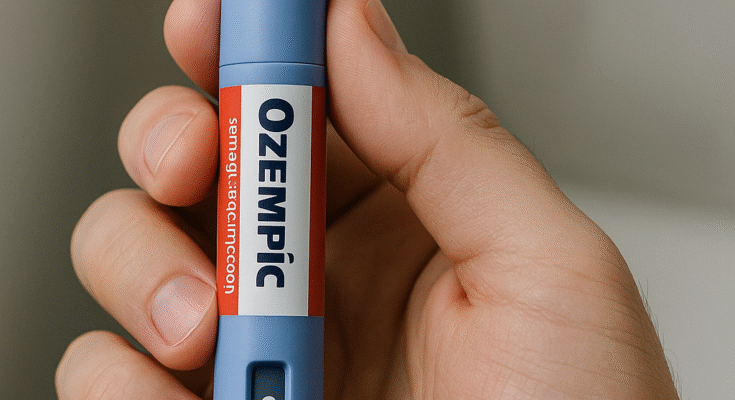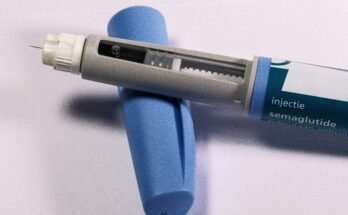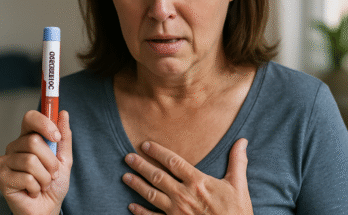Living with type 2 diabetes or managing weight with the help of medications like Ozempic can feel like navigating a maze. You’re juggling doctor’s appointments, lifestyle changes, and the nitty-gritty of administering your medication correctly. One question that often pops up for Ozempic users is: “How do I know when my pen is empty?” It’s a valid concern—running out of medication unexpectedly or misjudging the pen’s contents can throw a wrench in your treatment plan. As an expert in diabetes management and medication delivery systems, I’m here to break it down for you in a way that’s clear, engaging, and empowering. Let’s dive into the world of the Ozempic pen and uncover the clues that tell you when it’s time to grab a new one.
Understanding the Ozempic Pen: The Basics
Before we get to the “empty” part, let’s set the stage with a quick overview of the Ozempic pen. Ozempic (semaglutide) is a once-weekly injectable medication used to improve blood sugar control in adults with type 2 diabetes and, in some cases, to support weight management under medical supervision. The pen is a sleek, user-friendly device pre-filled with a specific amount of medication, designed to deliver precise doses (typically 0.25 mg, 0.5 mg, 1 mg, or 2 mg, depending on your prescription). Each pen is labeled with the total volume of medication it contains, usually 1.5 mL or 3 mL, and the number of doses it can deliver. For example, a pen might contain four 1 mg doses or eight 0.5 mg doses. Knowing your prescribed dose and the pen’s capacity is the first step to tracking when it’s running low.
The pen’s design is intuitive, with a dose selector, an injection button, and a dose counter window that shows the amount of medication you’re about to inject. But here’s the catch: unlike a gas tank with a clear gauge, the Ozempic pen doesn’t flash a neon “empty” sign. Instead, it gives you subtle but reliable cues, which we’ll explore in detail. By paying attention to these signals, you can avoid the frustration of an unexpectedly empty pen and stay on top of your treatment.
The Dose Counter: Your First Clue
One of the most reliable ways to tell if your Ozempic pen is nearing empty is by checking the dose counter window. This small window on the side of the pen displays the dose you’ve selected when you turn the dose selector. Let’s say you’re prescribed 1 mg weekly. You twist the selector, and the window shows “1.0.” But what happens when there’s not enough medication left to deliver your full dose? The pen won’t let you dial up to your prescribed amount. For instance, if you try to select 1 mg but the pen stops at 0.5 mg, that’s a clear sign the pen doesn’t have enough Ozempic left to complete your dose.
This feature is a built-in safeguard. The Ozempic pen is engineered to prevent you from injecting a partial dose that’s less than what you’ve dialed. If you can’t select your full dose, it’s time to check whether the pen is empty or nearly there. Don’t try to force the dial or inject what’s left—it’s better to switch to a new pen to ensure you’re getting the correct amount of medication. Keep an eye on the dose counter each week, especially as you approach the final dose listed on the pen’s label. This proactive habit can help you anticipate when a new pen is needed.
Visual Inspection: Peering into the Cartridge
Another way to gauge whether your Ozempic pen is empty is by taking a look at the medication cartridge inside the pen. The cartridge is the clear plastic chamber that holds the liquid Ozempic solution. Hold the pen up to a light source and gently tilt it to see how much liquid remains. A full pen will show a noticeable amount of clear liquid sloshing around, while a nearly empty pen might have only a tiny amount—or none at all—visible.
However, this method isn’t foolproof. The cartridge is small, and it can be tricky to judge the exact amount of medication left, especially if you’re not used to inspecting it. Plus, the pen’s design ensures that even when it looks like there’s a drop or two remaining, it may not be enough to deliver a full dose. Use the visual inspection as a secondary check rather than your primary guide. If the cartridge looks empty and the dose counter won’t let you dial your full dose, it’s a strong indication that the pen is done.
Tracking Your Doses: The Math Matters
If you’re a planner (or just love a good system), tracking your doses can help you predict when your Ozempic pen will run out. Each pen is labeled with the number of doses it contains, based on your prescribed dose. For example, a 3 mL pen might deliver four 1 mg doses or eight 0.5 mg doses. When you start a new pen, note the date and the number of doses it’s supposed to provide. Then, mark each injection on a calendar or in a medication app to keep tabs on how many doses you’ve used.
Let’s break it down with an example. Suppose you’re using a pen that delivers four 1 mg doses, and you inject once a week. After three weeks (three doses), you know the next injection will be the last one from that pen. By the fourth week, you should have a new pen ready to go. This method is especially helpful if you’re on a consistent dose and want to avoid surprises. If you’re ever unsure how many doses are left, check the pen’s packaging or consult your pharmacist—they can confirm the pen’s capacity based on your prescription.
What to Do When the Pen Is Empty
So, you’ve confirmed your Ozempic pen is empty—now what? First, don’t panic. If you can’t dial your full dose or the cartridge looks empty, it’s time to switch to a new pen. Always keep a spare pen in your fridge (stored at 36°F to 46°F) to avoid gaps in your treatment. Before using a new pen, let it sit at room temperature for about 15–30 minutes to make the injection more comfortable. Follow the same steps for priming the pen (dialing to the flow check symbol and pressing the injection button until a drop appears at the needle tip) to ensure it’s ready to use.
Dispose of the empty pen safely in a sharps container—never toss it in the regular trash. If you’re running low on pens or didn’t realize you were out, contact your pharmacy or healthcare provider right away to arrange a refill. To prevent future hiccups, set a reminder to check your supply a week or two before you expect to need a new pen. Staying ahead of the game keeps your treatment on track and reduces stress.
Common Pitfalls to Avoid
Using the Ozempic pen is straightforward, but there are a few mistakes to watch out for. One is assuming the pen is empty just because the dose counter feels “stiff” or hard to turn. Sometimes, the dial might resist slightly due to the pen’s internal mechanics, but this doesn’t always mean it’s out of medication. Check the dose counter and cartridge first before jumping to conclusions. Another pitfall is forgetting to prime the pen before each use, which can make it seem like the pen isn’t delivering medication when it’s actually fine. Always follow the priming steps outlined in the pen’s instructions.
Finally, don’t try to “stretch” a nearly empty pen by injecting a partial dose. Ozempic’s effectiveness depends on receiving the full prescribed amount, and partial doses could undermine your treatment. If you’re ever in doubt about whether the pen is empty or functioning correctly, reach out to your healthcare provider or pharmacist for guidance.
FAQs
What should I do if I accidentally inject a partial dose because the pen ran out mid-injection?
If you realize mid-injection that the pen didn’t deliver your full dose, don’t try to inject more from the same pen. Instead, grab a new pen, prime it, and administer the remaining portion of your dose as soon as possible. For example, if you needed 1 mg but only got 0.5 mg, inject the remaining 0.5 mg from the new pen. Contact your healthcare provider to report the issue and confirm your next steps.
Can I reuse an Ozempic pen after it’s empty?
No, Ozempic pens are single-use devices designed for a specific number of doses. Once the pen is empty, it can’t be refilled or reused. Dispose of it safely in a sharps container and start a new pen for your next dose.
How do I store my Ozempic pens to ensure they last?
Store unused Ozempic pens in the refrigerator between 36°F and 46°F, away from the freezer compartment. Once you start using a pen, you can keep it at room temperature (up to 86°F) for up to 56 days. Always check the expiration date and avoid exposing pens to extreme heat or sunlight.
Conclusion
Knowing when your Ozempic pen is empty doesn’t have to feel like a guessing game. By paying attention to the dose counter, inspecting the cartridge, and tracking your doses, you can stay one step ahead and keep your treatment on track. The Ozempic pen is designed with user-friendly features to make this process as smooth as possible, but it’s up to you to stay vigilant and prepared. With these expert tips in your toolkit, you’re well-equipped to manage your medication like a pro. Keep those spare pens handy, dispose of empties safely, and don’t hesitate to reach out to your healthcare team if you hit a snag. Here’s to taking charge of your health with confidence!

Lisa Caldwell is a clinical health writer and certified diabetes educator with a strong background in pharmacology and metabolic health. With over 12 years of experience in patient education, she specializes in translating complex research on GLP-1 medications like Ozempic into clear, practical guidance.




